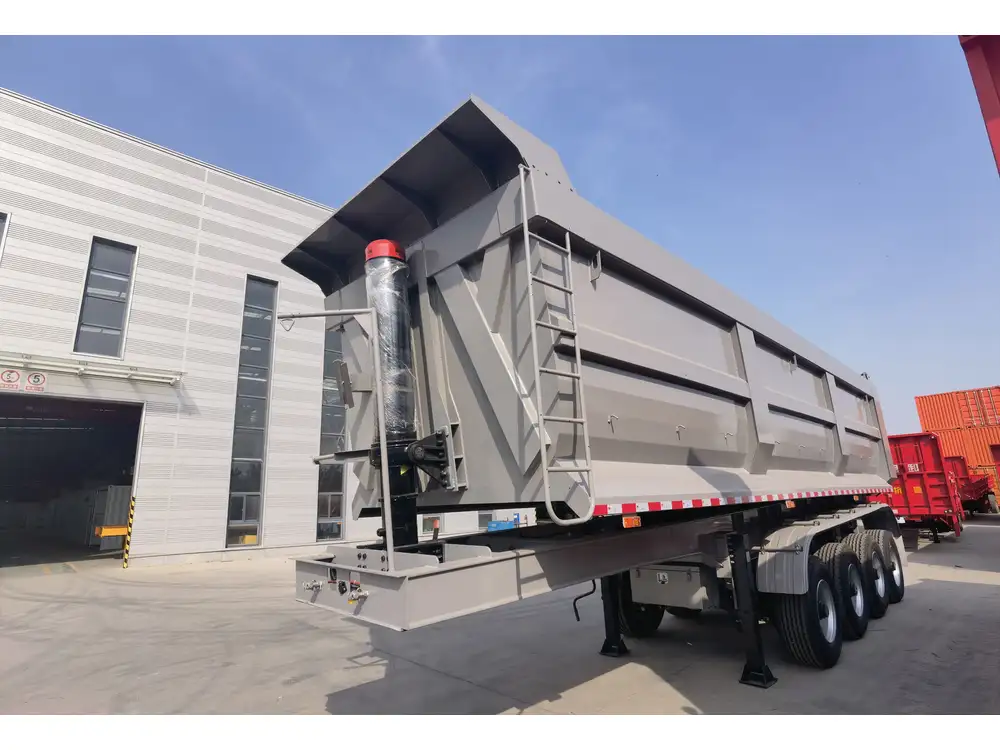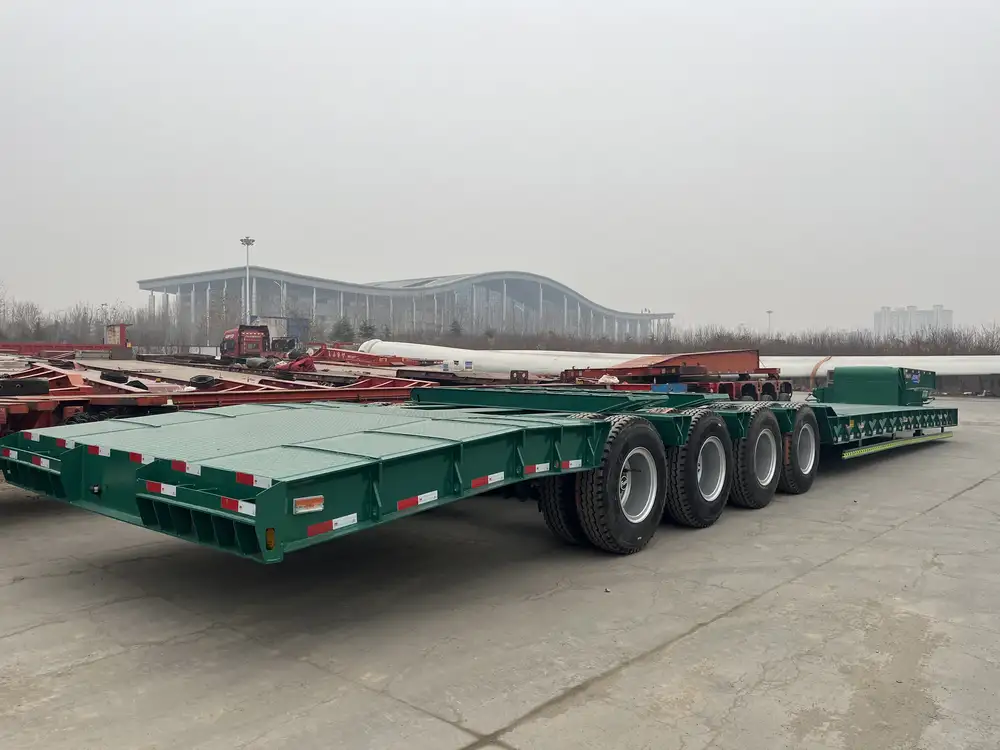Introduction to Semi Truck Trailer Heights
In the trucking industry, understanding the height of a semi truck trailer is crucial for ensuring compliance with regulations, effective transport logistics, and overall operational safety. Height specifications can significantly influence routing decisions, especially in urban areas where bridges and overpasses are common. In this article, we will delve into the standard heights of semi truck trailers, variations based on trailer types, and consider other geometric benchmarks crucial for transportation.
Standard Semi Truck Trailer Heights
The standard height for a semi truck trailer typically falls between 13 feet 6 inches (4.1 meters) and 14 feet (4.3 meters). This range is mandated to ensure that trucks can navigate most highways and roads across the United States without running into clearance issues. However, several factors affect this range, including the type of trailer, its load, and any modifications that may have been made post-manufacture.
| Trailer Type | Standard Height |
|---|---|
| Flatbed Trailers | 13′ 6″ (4.1 m) |
| Refrigerated Trailers | 13′ 6″ – 14′ (4.1 – 4.3 m) |
| Tank Trailers | 13′ 6″ – 14′ (4.1 – 4.3 m) |
| Enclosed Trailers | 13′ 6″ – 14′ (4.1 – 4.3 m) |

Compliance with Height Regulations
The Federal Highway Administration (FHWA) has set guidelines that restrict the maximum height of vehicles, including semi truck trailers, to avoid hazards on the roads. Height restrictions can vary by state or municipality, leading drivers to often verify local requirements especially when planning routes in urban areas with known low-clearance structures.
Variations in Trailer Heights
While 13 feet 6 inches is often considered standard, different semi truck trailers may exhibit slight variations based on their specific use cases. Here’s a closer look at some of these variations:
Flatbed Trailers: Typically do not exceed the standard height, maintaining an optimal design for transporting large and bulky items. Their open structure helps reduce wind resistance, but it also means they can haul taller loads, provided that the total height does not surpass regulations.
Refrigerated Trailers: These may come in several configurations, impacting their total height. While most are manufactured to stay within the standard height limits, specialized models designed for unique cargo may vary.
Lowboy Trailers: Designed to carry heavy loads, lowboys naturally sit lower to the ground. Their height is typically around 11 feet 6 inches (3.5 m), offering more stability for oversized equipment but requiring careful planning to adhere to transport regulations.
Why Does Height Matter?
Safety and Clearance: Understanding the height is essential for avoiding collisions with bridges, overpasses, and other overhead structures. Ignorance of height regulations could lead to accidents, infrastructure damage, and costly fines.
Fuel Efficiency: The height of a trailer impacts its aerodynamics. A lower profile can help improve fuel efficiency, which is a critical consideration amid rising fuel costs.
Load Restrictions: Various states have different allowable maximum heights when considering the entire assembly—truck and trailer. Knowing the height is vital for ensuring loads do not exceed regulatory standards.

Trailer Height and Weight Distribution
Beyond height alone, weight distribution plays a pivotal role in the performance and safety of semi truck trailers.
Load Weight Considerations
When loading a trailer, understanding how height interacts with weight distribution is imperative. Excessive height coupled with unbalanced weight can lead to precarious driving situations, affecting handling and braking capabilities.
Center of Gravity: The height of a load directly affects the center of gravity of the trailer, impacting its stability. A higher center of gravity can lead to a greater risk of tipping over during sharp turns or emergency maneuvers.
Load Securement: Ensuring that tall cargo is securely fastened is essential. Failure to do so can result in cargo shifting during transport, which again might lead to dangerous situations on the road.
The Future of Trailer Designs
As technology evolves, so too does the design of semi truck trailers. Innovations are being made to improve the safety, fuel efficiency, and usability of these vehicles.

Design Innovations
Aerodynamic Designs: New trailer designs are focusing on minimizing drag, often lowering the overall profile to advance fuel efficiency while remaining compliant with standard height regulations.
Inflatable Trailers: Some manufacturers are exploring inflatable trailers that adjust height and shape based on cargo, promising increased versatility and efficiency.
Essential Considerations for Buyers
When purchasing a semi truck trailer, several considerations regarding height and design will ensure you make an informed decision. Here are some essential points to keep in mind:
Compliance and Specifications
Ensure the trailer meets federal and state regulations regarding height and weight limits. Verify the manufacturer’s specifications concerning variations due to different loads as well.

Intended Use and Compatibility
Will the trailer be used in urban areas with low clearance, or on open highways? Understanding its intended route can guide your choice of height specification.
Customizations and Modifications
Analyze if the trailer requires modifications post-purchase. Height adjustments can have far-reaching implications on stability and load management.
Frequently Asked Questions

1. What is the maximum height for semi truck trailers in different states?
Most states adhere to the federal limit of 13 feet 6 inches; however, certain states may allow slightly taller loads under specific circumstances. Always check with local regulations.
2. How important is the height of a semi truck trailer when planning routes?
Incredibly important, particularly in urban navigation where low bridges or tunnels can become impediments. Heights must be accounted for during route planning to prevent accidents and ensure compliance.
3. Can trailer height impact fuel efficiency?
Yes, a lower trailer generally improves aerodynamics, thereby enhancing fuel efficiency. Cargo height should be also considered since it can contribute to the overall profile.

4. Are there exceptions to the standard height regulations?
Certain loads, particularly those deemed oversized or specialized, may receive permits allowing for deviations from the height standard. Such permits often come with route restrictions.
Conclusion
The height of a semi truck trailer is not merely a statistic—it’s a paramount aspect of trucking operations, influencing everything from safety and routing to fuel efficiency. As we navigate through evolving regulations and designs, it’s crucial for owners and operators to stay informed about industry developments and adhere to both federal and local height regulations. By understanding these dynamics, manufacturers and operators can optimize their logistics, enhance safety, and ultimately achieve better operational outcomes in the competitive transportation landscape.



